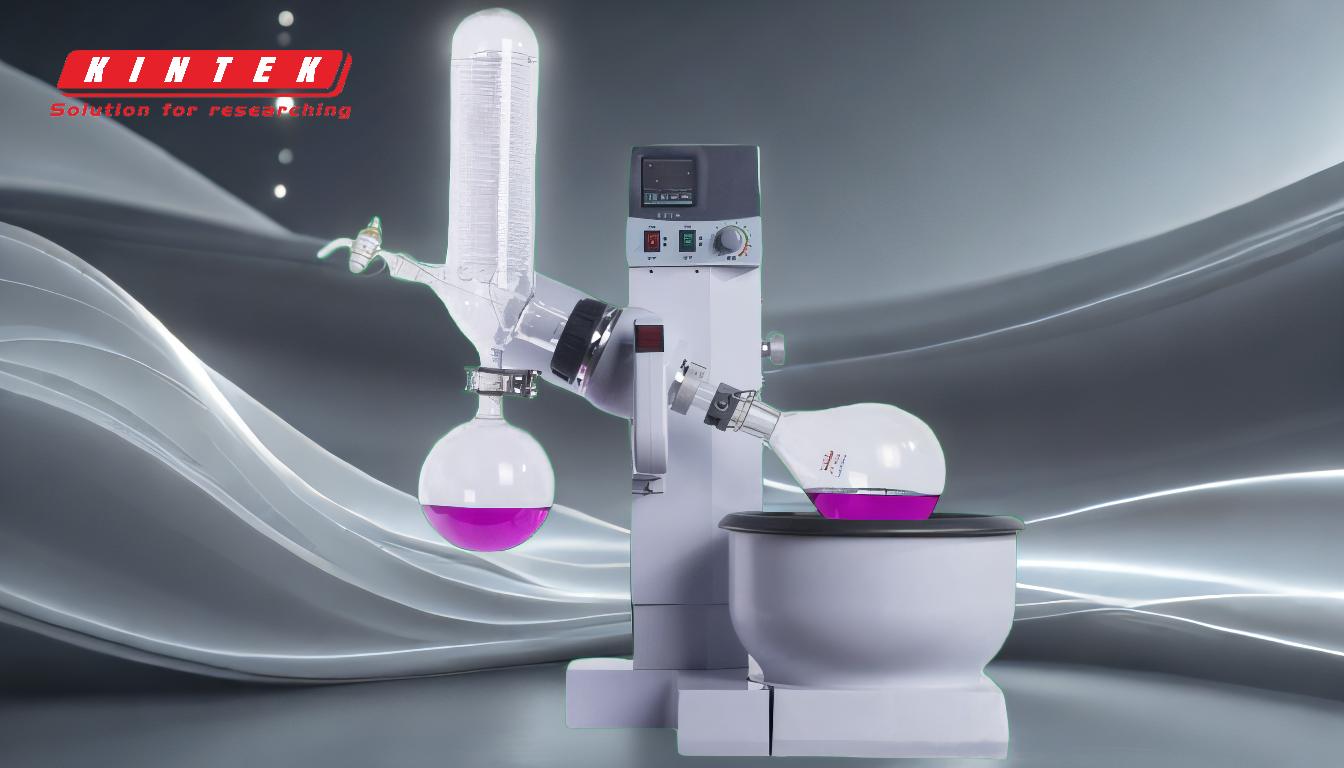A rotary evaporator, or rotavap, is indeed suitable for distillation, particularly for separating volatile solvents from mixtures under reduced pressure. It is commonly used in laboratories for tasks such as solvent removal, concentration, and purification of compounds. The device operates by rotating a flask in a heated water bath while applying a vacuum, which lowers the boiling point of the solvent, allowing for gentle and efficient evaporation. The condensed solvent is then collected separately. While it is not a traditional distillation setup, its ability to handle heat-sensitive materials and perform continuous distillation makes it a versatile tool for specific distillation applications.
Key Points Explained:

-
Definition and Primary Use:
- A rotary evaporator is designed to remove solvents from samples through evaporation under reduced pressure.
- It is commonly used for separating low-boiling solvents from compounds that are solid at room temperature.
-
Distillation Capability:
- Rotary evaporators can be used for distillation, particularly for volatile solvents.
- They are effective in separating solvents from mixtures without requiring high temperatures, making them suitable for heat-sensitive materials.
-
Operation Mechanism:
- The device consists of a rotating flask placed in a heated water bath.
- A vacuum pump reduces the pressure, lowering the boiling point of the solvent.
- The rotating motion increases the surface area of the liquid, enhancing evaporation.
- The solvent vapor condenses in a cooling unit and is collected in a separate flask.
-
Advantages Over Traditional Distillation:
- Reduced pressure allows for lower boiling points, minimizing the risk of thermal decomposition.
- The process is quicker and more efficient for solvent removal.
- It is ideal for delicate compounds, such as aroma extracts, that could be damaged by high heat.
-
Applications in Distillation:
- Continuous distillation of volatile solvents in chemical, industrial, and pharmaceutical fields.
- Concentration, crystallization, drying, and solvent recovery processes.
- Extraction of essential oils and preparation of samples for further analysis.
-
Limitations:
- Rotary evaporators are not suitable for high-boiling-point solvents or non-volatile compounds.
- They are typically used for small to medium volumes (up to 3 liters).
-
Comparison with Traditional Distillation:
- Traditional distillation often requires higher temperatures and is less suitable for heat-sensitive materials.
- Rotary evaporators provide a gentler alternative, especially for laboratory-scale distillation.
In summary, while a rotary evaporator is not a traditional distillation apparatus, it is highly effective for specific distillation tasks, particularly those involving volatile solvents and heat-sensitive materials. Its ability to operate under reduced pressure and at lower temperatures makes it a valuable tool in laboratories and industries requiring precise and gentle solvent separation.
Summary Table:
| Aspect | Details |
|---|---|
| Primary Use | Solvent removal, concentration, and purification under reduced pressure. |
| Distillation Capability | Effective for volatile solvents and heat-sensitive materials. |
| Operation Mechanism | Rotating flask, heated water bath, vacuum pump, and cooling unit. |
| Advantages | Lower boiling points, faster solvent removal, and gentle on delicate compounds. |
| Applications | Solvent recovery, essential oil extraction, and sample preparation. |
| Limitations | Not suitable for high-boiling-point solvents or large volumes (>3 liters). |
| Comparison | Gentler and more efficient than traditional distillation for lab-scale tasks. |
Discover how a rotary evaporator can optimize your distillation processes—contact us today!









